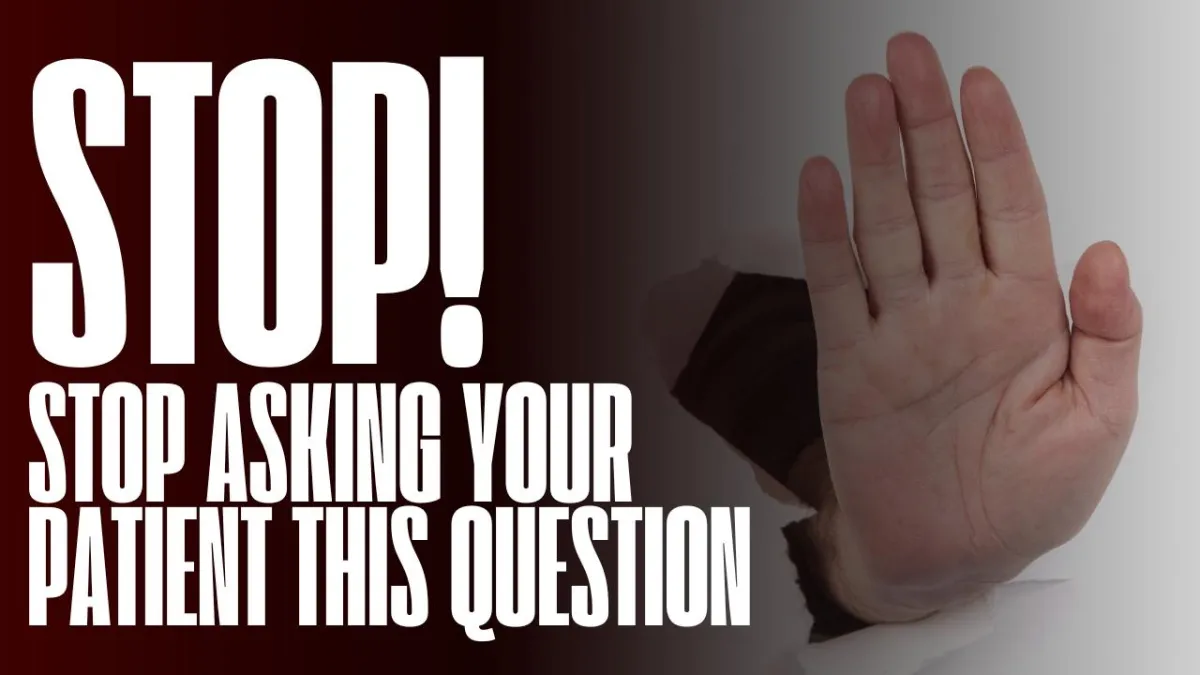
Why “How Are You Feeling?” Might Be Killing Your Patient Retention
Why “How Are You Feeling?” Might Be Killing Your Patient Retention
Every day, countless healthcare professionals across the country begin patient appointments with what seems like a thoughtful question:
“How are you feeling today?”
It’s well-intentioned. It sounds empathetic. It makes you feel like you’re doing the right thing.
But what if I told you that this one small question might be quietly sabotaging your patient retention, undercutting the perceived value of your care, and planting seeds of doubt in your patients' minds?
Let’s break this down.
🧠 Feelings Are Fleeting. Function Is Foundational.
Pain is emotional. It fluctuates. It's influenced by everything from how well someone slept to what they ate for dinner last night. Emotions, stress levels, relationships, hormones—they all affect how we “feel” in any given moment.
But function?
Function is measurable. Tangible. Transformational.
When you train your team to lead every appointment with a question about feelings, you’re unknowingly anchoring the entire conversation—and the patient’s perception of their healing journey—to something inconsistent and unreliable.
It’s like asking someone with braces, “Does your mouth feel better today?”
Of course not.
Their teeth are being forced into alignment. It’s uncomfortable. But it’s working.
🎯 Flip the Focus: From Pain to Progress
Let’s say a patient with low back pain begins care. After a few visits, their pain fluctuates—it’s better some days, worse others.
If you’ve built your culture around “How are you feeling?”, guess what they start thinking when the pain returns?
“This isn’t working.”
“I thought I’d be better by now.”
“Maybe this care plan isn’t right for me.”
And that’s when the drop-offs happen. The no-shows. The ghosting. The refund requests.
But now imagine if instead of asking how they feel, your team asked:
“How did walking the dog go this week?”
“Were you able to get back to your gardening?”
“You mentioned wanting to stand for 15 minutes without pain—how’d that go?”
Suddenly, the conversation shifts from pain to progress. From emotions to empowerment. From a feeling to a functional win.
Even when pain is still present, they can see the gains.
🏋️ Healing Isn’t Always Comfortable—But It’s Always Worth It
Think about physical therapy. Strength training. Learning a new skill.
Discomfort is part of the process.
A runner doesn’t feel good during every mile. A student doesn’t feel confident during every class. A patient won’t feel 100% every step of the way—but their function can still improve dramatically.
Progress often looks like small, consistent steps: tying their shoes without wincing, standing to cook dinner, walking across the parking lot without fear.
These are the victories that matter.
So why aren’t we talking about them more?
🧩 Track the Wins. Anchor the Progress.
Here’s the truth: most patients forget how far they’ve come.
Pain has a way of clouding memory. If someone came in barely able to walk, and a few weeks later they’re taking care of their kids, climbing stairs, or returning to work—they need to be reminded of that.
Your team should be the mirror reflecting their journey back to them.
“Remember when you couldn’t sit through your daughter’s recital without shifting every five minutes? Last week, you sat comfortably the whole time.”
“You mentioned struggling to stand in the kitchen for more than 10 minutes. Now you’re cooking full meals again.”
These aren’t just feel-good moments. They’re retention tools. They’re trust builders. And they’re the reason a patient keeps coming back—even when the pain isn’t 100% gone.
✅ What To Say Instead
Start replacing vague, feeling-based questions with clear, function-based check-ins. Here are a few powerful examples:
“Last week you aimed to climb a flight of stairs. How’d it go?”
“You wanted to get back to showering on your own—where are we with that?”
“You were hoping to stand during work meetings—any progress?”
These questions reframe healing as empowerment, not emotional validation.
And when patients feel empowered, they stay engaged.
🚀 At Med Pro Dojo, We Help You Do Just That
You don’t have to guess your way through improving retention or building a better care experience. That’s where we come in.
At Med Pro Dojo, we specialize in helping medically integrated and chiropractic practices elevate their teams, their systems, and their patient communication.
We don’t just offer training—we become your strategic partner in delivering transformational care that lasts.
Here’s what we help you master:
✅ Building a high-performing, emotionally intelligent team
✅ Handling objections with empathy and confidence
✅ Boosting patient satisfaction, trust, and long-term enrollment
✅ Leading your practice with clarity, collaboration, and courage
Whether you’re stuck in a retention slump, need better team alignment, or are ready to scale your systems—we’ve got your back.
🧠 Who We Are – Med Pro Dojo
We know one-size-fits-all doesn’t work in healthcare. Every team is unique. Every practice has its own strengths, struggles, and story.
That’s why we offer:
🔹 Personalized coaching for practice owners ready to scale or pivot
🔹 On-site and virtual training for better communication and leadership
🔹 Real-world strategies that increase revenue and decrease burnout
🔹 Systems that support growth, reduce stress, and increase patient impact
We’re not about fluff. We’re about function—just like you.
Let’s build a practice where every team member knows how to connect with confidence, every patient feels respected and heard, and your results speak for themselves.
📞 Call us: (833) 678-0800
📧 Email: [email protected]
🚀 Schedule Your FREE Program Demo Today!
💬 Final Thought
Retention doesn’t happen by accident. It’s built with intentional conversations, compassionate leadership, and a clear focus on what really matters.
So the next time your team wants to ask, “How are you feeling?”—pause.
Instead, ask: “What can you do now that you couldn’t do before?”
Because that’s the moment healing becomes real—and your practice becomes unforgettable.